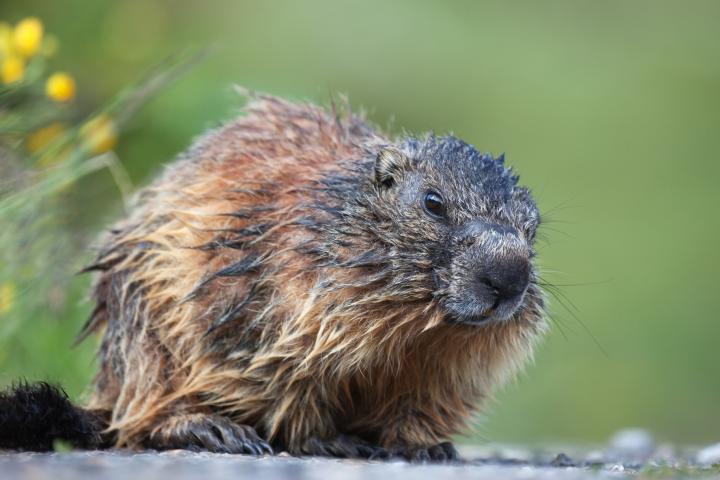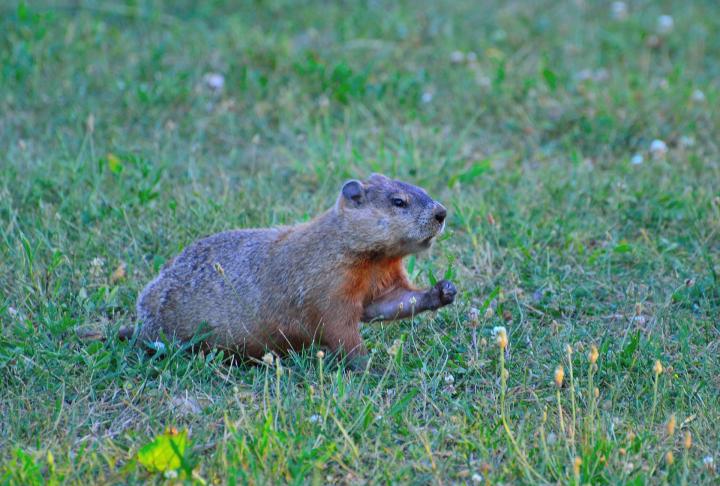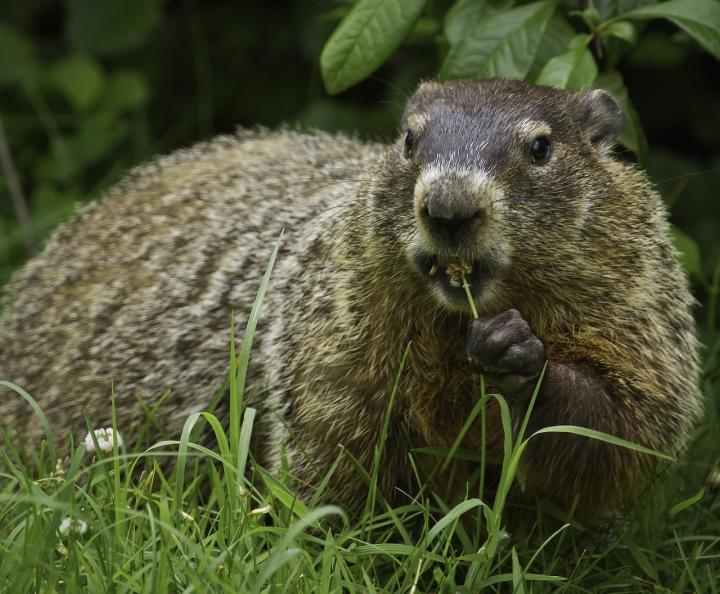






Woodchucks or groundhogs can greatly damage a garden.
CrestockHere are tips for identifying and getting rid of woodchucks or groundhogs.
If every day is Groundhog Day in your garden, you’ll probably agree with those who call that gluttonous rodent their least favorite backyard creature. Even skunks get more respect. Speaking of Groundhog Day, find out the origins of that funny holiday and some folklore surrounding groundhogs and weather.
The problem is that groundhogs or woodchucks are binge eaters who can wipe out your vegetable garden in a matter of minutes. They climb, they burrow, they swim, and they eat—an adult consumes about a pound to a pound-and-a-half of vegetation daily. Between spring and fall, they double their body weight.
Yes they do! Soon after they emerge from a winter’s hibernation, they mate, giving birth in mid-spring—at a time when the picking are at their slimmest. Neat rows of seedlings must look like manna from heaven to hungry woodchucks, who sometimes perch on garden fence posts as if they are looking over the salad bar.
When hibernating, woodchucks, who are never speedy, really slow down, drawing a breath only about every five minutes. Hibernation is curious behavior: Barely breathing, these mammals cool off to just a few degrees above the ambient temperature, sometimes as low as 39º to 40ºF. Their metabolic rate drops, and they sleep profoundly in their winter dens, neither eating nor drinking for four-and-a-half to five-and-a-half months, drawing all their nourishment from the body fat they accumulated during the summer. No wonder they eat so much!

Members of the squirrel family, woodchucks are squarish, stocky animals that typically weigh between 4 and 14 pounds. The have short, strong legs; coarse, grizzled, gray-brown fur; small ears; a short, bushy tail; and curved claws. Groundhogs look a bit like runaway fur coast as they waddle back to their burrows. This critter can grow to be about 3 feet long. They have large, competent, chisel-like teeth that make them efficient but not quite endearing.
Wondering where groundhogs live? See any deep tunnels in your yard, under your deck, or near your foundation? You may have a woodchuck or groundhog; they dig burrows to live in and the entrances are usually 10 to 12 inches wide with the excavated soil spread around the entrances. There are usually 2 or 3 entrances.
What do groundhogs eat? Everything from flowers to vegetables. Favorite foods include alfalfa, clover, peas, beans, lettuce, broccoli, plantain, and soybeans. Woodchucks will often devour your seedlings before they even have time to grow. Rabbits and deer eat some of the same plants, so make sure to check for burrows before concluding that you have woodchucks or groundhogs. If you don’t have vegetables around, woodchucks will settle for twigs, bark, bugs, and blossoms.
Woodchucks/groundhogs eat mostly during the early morning and afternoon, so try to see when your garden is receiving the most damage. These creatures will also gnaw and claw at fruit trees, so check your trees for any such marks.

The best woodchuck deterrent is a fence. Excluding woodchucks from the garden will also keep out deer, rabbits, raccoons, and stray pets. Since groundhogs climb and also burrow, you’ll need to build a secure enclosure using six-foot-wide woven-wire fencing. Above ground, the fence should be about four feet high, with the top 12 inches unattached to fence posts (i.e., floppy and facing away from the garden, so that when a woodchuck tries to go over the top, its weight will flip it back). The two feet of fencing buried underground should form an L-shape, with 12 inches going straight down and the bottom 12 inches bent at a right angle away from the garden.
An apron of weighed-down black plastic around the garden discourages some diggers, and so does an electric fence strung four to six inches off thr ground about four to six inches outside the woven-wire fence.
Pay special attention to areas facing fields where woodchucks live or places where they have been digging; sometimes extra fortification in just these spots is called for. Be sure the gate is protected, too. Fencing is not inexpensive, but it’s an investment in serious gardening.
Copyright © www.100flowers.win Botanic Garden All Rights Reserved